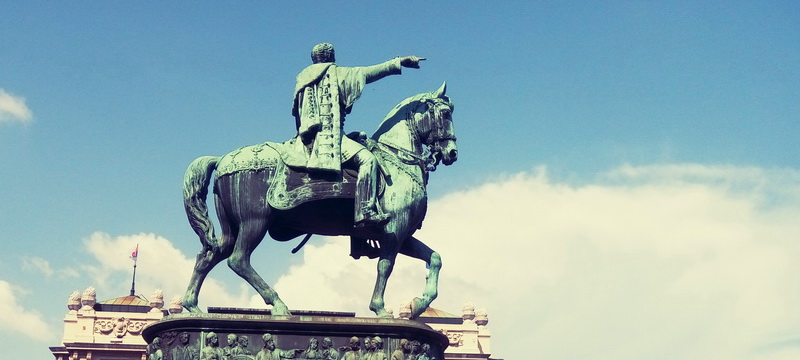
Knez Mihailova Street or Prince Michael Street is the main pedestrian and shopping zone in Belgrade, and is protected by law as one of the oldest and most valuable landmarks of the city.
Named after Mihailo Obrenovi? III, Prince of Serbia, it features a number of buildings and mansions built during the late 1870s. One kilometer long Knez Mihailova Street was in 1979 included on the list of Spatial Cultural-Historical Units of Great Importance, and as such is protected by the Republic of Serbia.
The street follows the central grid layout of the Roman city of Singidunum. During Ottoman occupation, there were gardens, drinking-fountains and mosques along the street. In the middle of the 19th century, the upper part of the street bordered the garden of Knez Aleksandar Kara?or?evi?. After the implementation of the 1867 city of Belgrade regulation plan by Emilijan Josimovi?, the street soon gained its current look and architecture. Houses were built there by the most influential and wealthiest families of the Serbian society, most of them merchants.
In 1870, one year after the assassination of Prince Mihailo Obrenovi?, the city authorities officially named the street – Ulica Kneza Mihaila (Prince Michael Street).
Today, Knez Mihailova is a common meeting point for citizens of Belgrade. The street has been named one of the most beautiful pedestrian zones in South East Europe and is a constant buzz of people and tourists. Thousands of people stroll along the street every day as it is the shortest path from Terazije to Kalemegdan park and fortress. The street is home to Serbian Academy of Sciences and Arts (SANU), Instituto Cervantes, Goethe-Institute, Alliance française, as well as many other leading shops and several cafes.

